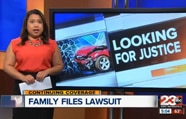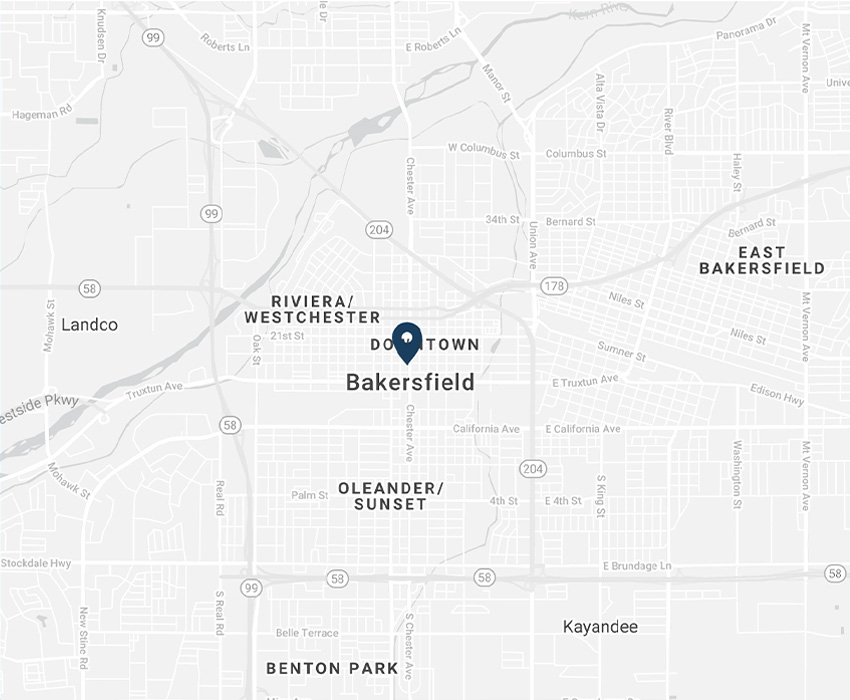Sexual harassment in the workplace and the #MeToo Movement
March 14, 2018 | Article by Chain | Cohn | Clark staff | Tips & Information Social Share

Chain | Cohn | Clark workers’ compensation* attorney Beatriz Trejo recently made a presentation in front of the Kern County Paralegal Association focused on ethical obligations to prevent sexual harassment in the workplace, and the #MeToo Movement. Below is a synopsis of that “Minimum Continuing Legal Education” presentation.
———
* Please note: Chain | Cohn | Clark is no longer accepting wrongful termination and sexual harassment cases *
Preventing sexual harassment in the workplace is an ethical obligation of all employees, in addition to a serious legal issue.
More recently, we have seen uprising of people who have gone public with their stories of sexual harassment, assault and abuse, and systemic sexism. The “Me Too” hashtag campaign has spread virally to denounce sexual assault and harassment, and millions have used the hashtag to come forward with their own experiences.
Below is a timeline of legal and societal landmarks that led to our current state:
- 1964: The Civil Rights Act of 1964 is passed, which prohibits employment discrimination based on race, color, sex, religion or national origin. It is commonly referred to as “Title VII,” because that’s the part of the act that covers employment. Title VII covers both men and women, but its original intent was to protect women in the workplace. This remains its main emphasis today.
- 1986: In a landmark decision, the Supreme Court rules that sexual harassment can be sex discrimination prohibited by Title VII. The case of Meritor Savings Bank v. Vinson ruled that speech in itself can create a hostile environment, which violates the law.
- 1991: The Civil Rights Act of 1991 is passed. Congress modifies Title VII to add more protection against discrimination in the workplace. Among other things, the Civil Rights Act of 1991 allows harassment and discrimination plaintiffs the right to a jury trial in federal court. It also gives plaintiffs the right to collect compensatory and punitive damages for the first time, subject to a cap based on the size of the employer.
- 1993: Harris v. Forklift Systems is handed down. Here the plaintiff worked as a manager of a company that rented heavy equipment to construction companies. Forklift’s president continually made the plaintiff the target of comments such as, “You’re a woman, what do you know?,” and, “We need a man as the rental manager.”
- 2004: Facebook is launched.
- 2006: Tarana Burke uses the term “Me Too” to raise awareness of the pervasiveness of sexual abuse, assault, and harassment.
- 2006: Twitter is launched.
- October 2017: Actress Ashley Judd accuses media mogul Harvey Weinstein of sexual harassment. Actress Alissa Milano tweets, “If you’ve been sexually harassed or assaulted write ‘Me Too’ as a reply to this tweet.” Half a million people responded to the tweet in 24 hours. After the tweet, Facebook reported 12 million posts and comments regarding #MeToo. Within 24 hours 45 percent of all U.S. Facebook users knew someone who had posted #MeToo. The stories posted recounted stories in the entertainment industry, sports, politics, military, and law.
- December 2017: The #MeToo movement “Silence Breakers” are named 2017’s “Person of the Year” by Time Magazine.
Today, we all continue to be protected against harassment under the U.S. Equal Employment Opportunity Commission rules, which state:
Harassment is a form of employment discrimination that violates Title VII of the Civil Rights Act of 1964, the Age Discrimination in Employment Act of 1967, (ADEA), and the Americans with Disabilities Act of 1990, (ADA).
Harassment is unwelcome conduct that is based on race, color, religion, sex (including pregnancy), national origin, age (40 or older), disability or genetic information. Harassment becomes unlawful where 1) enduring the offensive conduct becomes a condition of continued employment, or 2) the conduct is severe or pervasive enough to create a work environment that a reasonable person would consider intimidating, hostile, or abusive. Anti-discrimination laws also prohibit harassment against individuals in retaliation for filing a discrimination charge, testifying, or participating in any way in an investigation, proceeding, or lawsuit under these laws; or opposing employment practices that they reasonably believe discriminate against individuals, in violation of these laws.
Offensive conduct may include, but is not limited to, offensive jokes, slurs, epithets or name calling, physical assaults or threats, intimidation, ridicule or mockery, insults or put-downs, offensive objects or pictures, and interference with work performance. Harassment can occur in a variety of circumstances, including, but not limited to, the following:
- The harasser can be the victim’s supervisor, a supervisor in another area, an agent of the employer, a co-worker, or a non-employee.
- The victim does not have to be the person harassed, but can be anyone affected by the offensive conduct.
- Unlawful harassment may occur without economic injury to, or discharge of, the victim.
Still, harassment continues. In fact, an October 2017 poll by NBC and the Wall Street Journal found the following:
- 48 percent of women stated that they have received an unwelcome sexual advance or other verbal or physical harassment of a sexual nature at work.
- 41 percent of men stated that they have observed inappropriate sexual conduct directed to women at work.
- 63 percent of Americans in October 1991 believed sexual harassment occurred in most workplaces.
- 66 percent of Americans in October 2017 believe sexual harassment occurs in most workplaces.
But legal remedies to fight against harassment continue to exist as well. Claims may be filed with the Department of Fair Employment and Housing, the Equal Employment Opportunity Commission, and the courts. And if the law is violated, damages, attorneys’ fees, and costs may be ordered.
———
If you or a someone you know needs assistance with a potential accident, injury or workers’ compensation case, it’s important to contact an attorney, call the lawyers at Chain | Cohn | Clark for a free consultation at 661-323-4000, or visit the website chainlaw.com.
To learn more about workers’ compensation associate attorney Beatriz Trejo, click here.
———
*NOTICE: Making a false or fraudulent Workers’ Compensation claim is a felony subject to up to 5 years in a prison or a fine of up to $150,000 or double the value of the fraud, whichever is greater, or by both imprisonment and fine.

